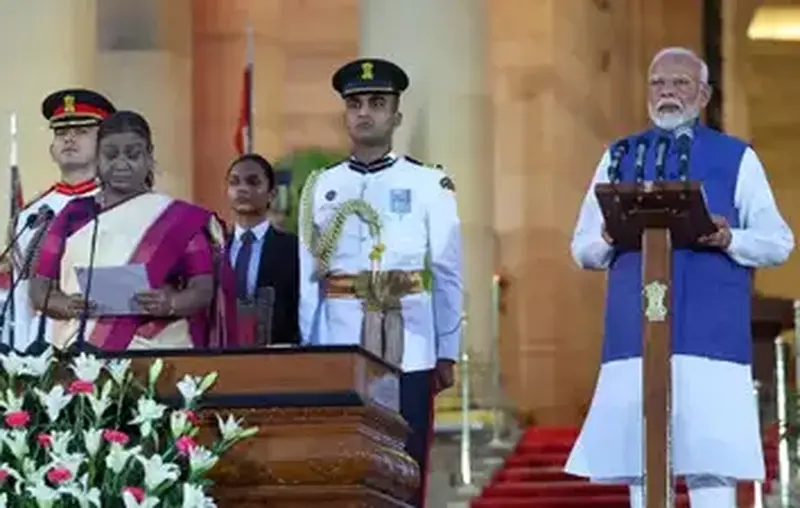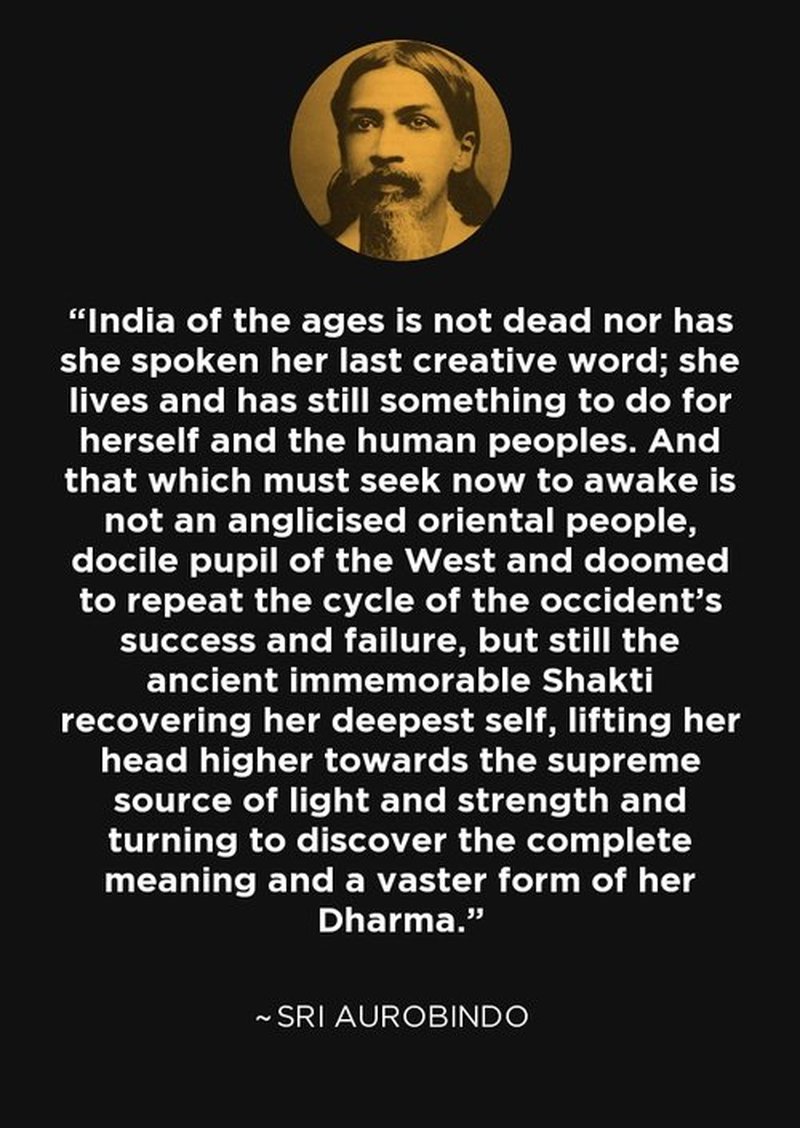
Every politically-aware Hindu must understand the precarious situation we are in, in terms of survival and civilisational terms. A holistic Hindu consolidation is far beyond the strategic concerns of just the BJP. – Aravindan Neelakandan
The recent definitive electoral triumph, securing a third consecutive term, for the National Democratic Alliance (NDA) headed by the Bhartiya Janata Party (BJP) carries both the sweetness of victory and the bitterness of falling short of an outright majority for the BJP.
However, this sweet-bitter win serves as a timely caution for the Hindutva party to strive for an absolute majority in the next general elections of 2029.
The path ahead is formidable, but this setback may well have paved the road-map for the saffron party to achieve its most significant fourth consecutive victory in the next elections to Indian Parliament.
It is always easy to criticise in hindsight. From candidate selection to complacency, one can now cite a thousand one faults in the campaign.
The recent election results have proven that the Indian National Congress (INC) was completely wrong in questioning the reliability of Electronic Voting Machines (EVM). They knowingly spread false information and created doubts in the minds of the public. It would be great if the Supreme Court takes notice of this behaviour by the opposition alliance and holds them accountable. They should apologize not only to the Election Commission but also to the citizens of India.
The election results have also shattered the false notion that Indians in the north blindly vote for the BJP based on communal sentiments, while those in the south, being ‘secular and enlightened’, vote against it.
This divisive narrative shamelessly propagated by the INDIA alliance with its racist undertones, is a re-employment of a dangerous ploy which was a colonial fabrication.
The truth is that Indian voters, regardless of their region, vote with reason and caution. They make informed choices, considering the welfare of the nation above all else.
In 2019, the BJP won because they effectively showcased the welfare schemes that benefited people from all walks of life. With corruption almost eliminated, the efficiency of the schemes reaching its beneficiaries was phenomenal.
The beneficiaries of these schemes became a strong support base for the BJP, contributing to their victory. Narendra Modi skilfully combined this new support base with a civilisational vision of Hindutva. It was a brilliant move, where the ideals of Ram and progress were integrated for the common Indian.
This vision and strategy draw their inspiration from Gandhi and Deendayal Upadhyaya. While some may consider such idealism in action quixotic, Modi proved that it can lead to significant political advantage.
In 2024, the Modi government faced the most challenging election in the history of any democracy. The magnitude and diversity of India made it even more difficult. The nation was devastated by a pandemic, causing immense loss of lives and livelihoods. Despite the government’s efficient response, there were inevitable shortcomings that took a toll on the people. These alone could have generated significant anti-incumbency.
However, against all odds, Modi’s BJP not only survived but also emerged victorious in the five state elections. The local factors played a crucial role in this remarkable achievement.
But the opposition was not idle.
In 2019, the opposition made a lot of noise about a fake scandal in the Rafale deal. It failed to gain traction. On the other hand, the Modi government showed the common man what they had achieved. The impact was felt, especially by women.
As 2024 approached, the opposition changed their strategy. They stopped alleging high-decibel scandals and instead outsourced the dirty work. Attacks similar to the Hindenburg Report and the Pegasus controversy emerged, all originating from outside India.
Meanwhile, within the country, they launched a massive mass contact program to address the real and perceived issues faced by the common man, such as unemployment and rising prices.
While security concerns and genuine threats to life, limited the Prime Minister’s direct interaction with the masses, Rahul Gandhi took on a ‘yatra’ where carefully orchestrated images of him connecting with people were widely shared through the media. With the widespread use of cell phones across society, the Congress IT cell efficiently disseminated these images and videos, transforming the perception of Rahul Gandhi.
He was now viewed as a charismatic leader rather than a privileged dynast. When I discussed this with influential BJP sympathisers before the elections, they dismissed it without consideration. It never pays to underestimate one’s enemy.
Then the ED raids happened which increasingly became a mockery. But important cases like the 2G spectrum scandal were not pursued with the same speed and publicity. The frequent raids on opposition politicians appeared trivial and motivated. The “Mood of the Nation” survey conducted by India Today revealed that even BJP sympathisers viewed these raids as politically driven.
Another concerning trend was the increasing number of people believing the opposition’s allegations of government favouritism towards certain corporates. These were not positive signs, yet they were seemingly ignored.
In summary, while the opposition remained stagnant between 2014 and 2019, Modi’s BJP adapted its strategies effectively. However, between 2019 and 2024, this dynamic appears to have reversed.
But all these were about poll strategies and lapses; what should be worrying to any Hindutvavadis is not all of the above.
The Indian National Congress (INC) under the dynasty has been progressively embracing all the spilt-Hindu society forces.
In the 1990s these forces used the Bahujan Samaj Party (BSP) of Kanshiram. But the brilliant vision of social harmony and justice put forth by that strategist Govindacharya (and it is said, aided by veteran journalist M.V. Kamath) had Mayawati’s BSP understand the inclusive nature of Hindutva.
Their slogans and approaches changed positively towards society. Unfortunately that vision seems to have been destroyed now by the dynasty.
Again it is the question of adaptation. The saffronists seemed to have lapsed into complacency.
The simple fact is that the political Hindu is still an effervescent entity and where sustained, the political Hindu is a minority. Just as how expansionist religionists as true secularists are effervescent.
So Hindus get divided into caste lines. The caste line divides are secular fault lines in the true sense of the term. It is about economic opportunities, social mobility, higher share of resources from land to bureaucratic power, etc.
A further twist comes when Rahul Gandhi and his political advisers like Kancha Ilaiah and Jairam Ramesh try to peddle a causal connection between the problems in these domains with Hindu religion. The BJP failed squarely to address this deepening faultline. Not because they could not. But because they thought they had already secured that front. They have not.
In order to establish a politically conscious Hindu majority, it is essential to go beyond mere rhetorical Hindutva. What is needed is a sustained and profound Hindutva that advocates social justice and harmony. This includes ensuring that all communities have equal access to education, livelihood opportunities, and positions of influence.
Hindu spiritual leadership should strive to democratise the presence of Saraswati (knowledge), Lakshmi (wealth), and Shakti (power) throughout all segments of society.
Hindu spiritual teachers, especially those perceived as traditional, bear a significant duty in this respect. They should spread the spiritual principles of liberty, fraternity and equality enshrined in Sanatana Dharma through its sacred Puranic historiography.
Their role extends to advocating for women’s empowerment and condemning practices like untouchability. Additionally, they must remind the so-called upper castes of their responsibility to rectify social exclusion, not merely as a strategic move but more so because it aligns with Dharma.
Rather than opposing intercaste relationships, they should either support them as Dharmic or if they cannot bring themselves to do it, should remain silent. Ultimately, purifying Dharma from socially stagnant elements like caste and untouchability is crucial. Failing to do so could jeopardise the survival of Hindus as a whole
Forget the BJP.
It is time for every Hindu to introspect as to how the person who was instrumental in building the Ram Mandir at Ayodhya had to struggle to win in UP while the successor to the leader who ordered firing on Ram bhaktas in Ayodya is today gloating in glee? Then compare this to the strategic voting by expansionist religionists.
Every politically-aware Hindu will then understand the precarious situation we are in, in terms of survival and civilisational terms.
A holistic Hindu consolidation is far beyond the strategic concerns of just the BJP. – Swarajya, 5 June 2024
› Aravindan Neelakandan is an author, historian, and consulting editor at Swarajya magazine. He has degrees in psychology and economics. Most of his work appears in the Tamil language.
